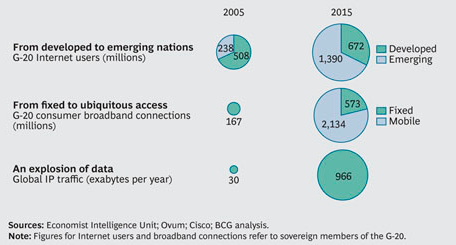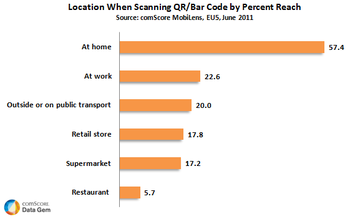Study: Web economy expected to double in G20 by 2016
We all know that the web economy is exploding at the moment in terms of activity and users. In the next four years the value of the web is expected to achieve a valuation sum growing from 2.7 to 4,2 trillion pounds. This means that the value of the web economy in the G20 countries is nearly going to double in the next four years.
The global web user base is expected to increase foe 1,9 to 3 million users by 2016 – almost half the world’s current population. All these findings are based on a new report commissioned by the Boston Consulting Group. Still, the report also states that there is at present no standard way of measuring the parts of web economy that is ‘digital’.
Boston sees the growth in the evolution of the mobile web access as 80% are assumed to access the web via smart mobile phones. Thinking back to 2010, which is just about two years back, mobile internet access accounted for just over 4% of the G20 economies. The study makers claim that each household has an approximate valuation of 2,000 pounds worth of purchases online before buying.

Some more key conclusions from the study…
– Digital transformation is key for companies. Companies have to build their digital assets and reduce the digital liabilities that limit their ability to tap rich opportunities. People, processes, and organizational structures need to change and adapt them to the digital world.
– IBM forecasts 1 trillion devices to be connected to the Internet by 2015. This has an effect on the ways companies interact with customers and run their supply chains but also how traditional industries have to build their business.
- Companies such as Amazon, Apple, Facebook, and Google shape the Internet, in China this might be Baidu and Tencent or in Russia Yandex.
– The power of digital experience goes far more local in terms of impact on everyday life, reflecting economic, political, national characteristics and social influences specific to individual countries.
– The “Millennials” have different expectations as employees, consumers, and citizens. TheArab Spring protests and grass-roots “occupy” movements in the West are the most visible manifestations of the power of the Millennials to shape society and commerce.
Spot On!
Seeing the rapid economical and market changes, the intensity of competition will improve and increase. Companies and brands will need to plan more flexible in terms of their strategic approaches how to reach clients than in earlier years when long-term planning cycles were the common status. Today, it will be important to create an adaptive strategy planing and restructuring process.
PS. A challenge might be if evangelist entrepreneuers like this guy spread market distraction and confusion….






 Never will I forget the day some time between 2001 and 2002 when I went to the BMW pavilion exhibition in Munich to get an understanding of what “Connected Drive” means. Those days, even the people in the pavilion could not help us, and it took BMW three days to give us some proper feedback on this term via telephone. Today, the term is clearly defined as driving with internet access which enables all sorts of connected infotainment, and if you want to know more about it, you can get plenty of information
Never will I forget the day some time between 2001 and 2002 when I went to the BMW pavilion exhibition in Munich to get an understanding of what “Connected Drive” means. Those days, even the people in the pavilion could not help us, and it took BMW three days to give us some proper feedback on this term via telephone. Today, the term is clearly defined as driving with internet access which enables all sorts of connected infotainment, and if you want to know more about it, you can get plenty of information 

 The
The 

 According to
According to